Esther Kiernan reviews four very different recent releases from Aotearoa, taking in a few centuries, and the breadth of New Zealand and beyond.
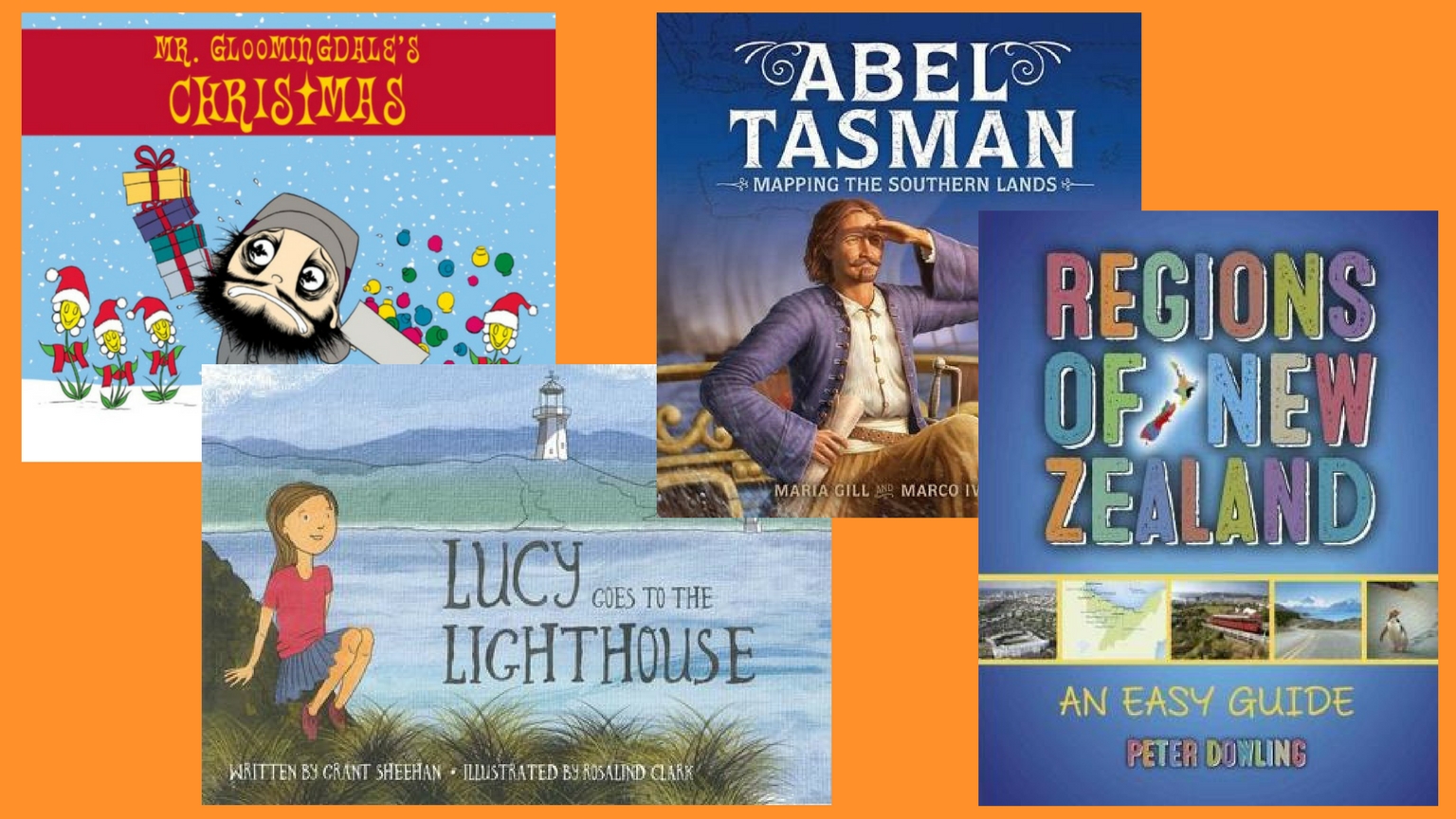
Mr Gloomingdale’s Christmas, written and illustrated by Andy Conlan
Mr Skinny, Mr Greedy, Mr Bump – no, it’s Mr Gloomingdale, and you probably don’t need much help to guess what his problem is. Although this book appears to be written, illustrated, and published by an Aucklander, the Christmas setting is very much northern hemisphere, full of ice and snow. Perhaps Mr Gloomingdale wouldn’t be so grouchy if he emigrated down under.
It’s a tad more sophisticated than the Mr Men books. Mr Gloomingdale knows that if he does something nice for others, he’ll feel happy, so he plans a Christmas feast. He turns down offers of help from some snow-repelling daisies, featherless birds, and unspecified blue creatures in favour of doing all the work himself, which turns out to be a bad idea. The feast is rescued when he accepts help, though there is one thing left that only he can do. (This cast my English degree into doubt – do I really not have the inference skills to be certain what it is? My children wondered it if was dressing up as Santa or saying ‘Merry Christmas’. I smugly thought it was smiling until they pointed out that it can’t be because the other creatures are doing that too.)
I felt like the theme of doing nice things for others didn’t reach its potential in this story because of the way the minor characters are painted. They are homogenous, eyeball-less groups without personalities of their own. If Mr Gloomingdale really cared about making them happy, maybe he’d know a bit more about them – their names, perhaps, or even what kind of creatures they are. In some ways, Mr Gloomingdale is an overgrown toddler, trying with the best of intentions to do things he can’t manage alone, and I think children will relate well to this aspect. It’s nice that the other creatures are so willing to help.
The posed illustrations are an interesting mix of colourful Seuss-like creatures and the dark and somewhat alarming image of Mr Gloomingdale, with his oddly dilated pupils, although he is quite cute when he smiles at the end. The very generous letter spacing makes the typeface hard to read.
It’s one of those books that your three-year-old will bring you to read again and again – because Christmas!
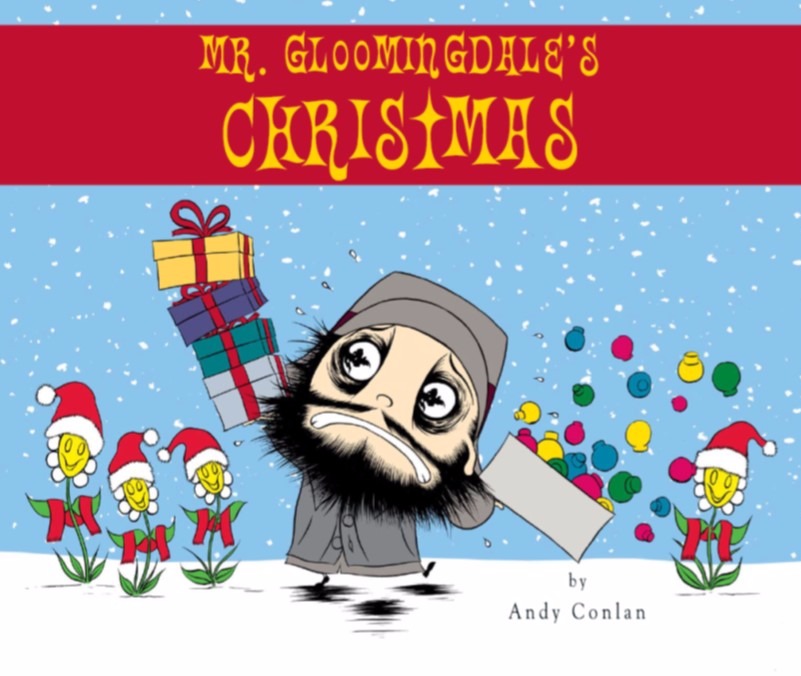
Mr Gloomingdale’s Christmas
By Andy Conlan
Gracewood Hollows Ltd
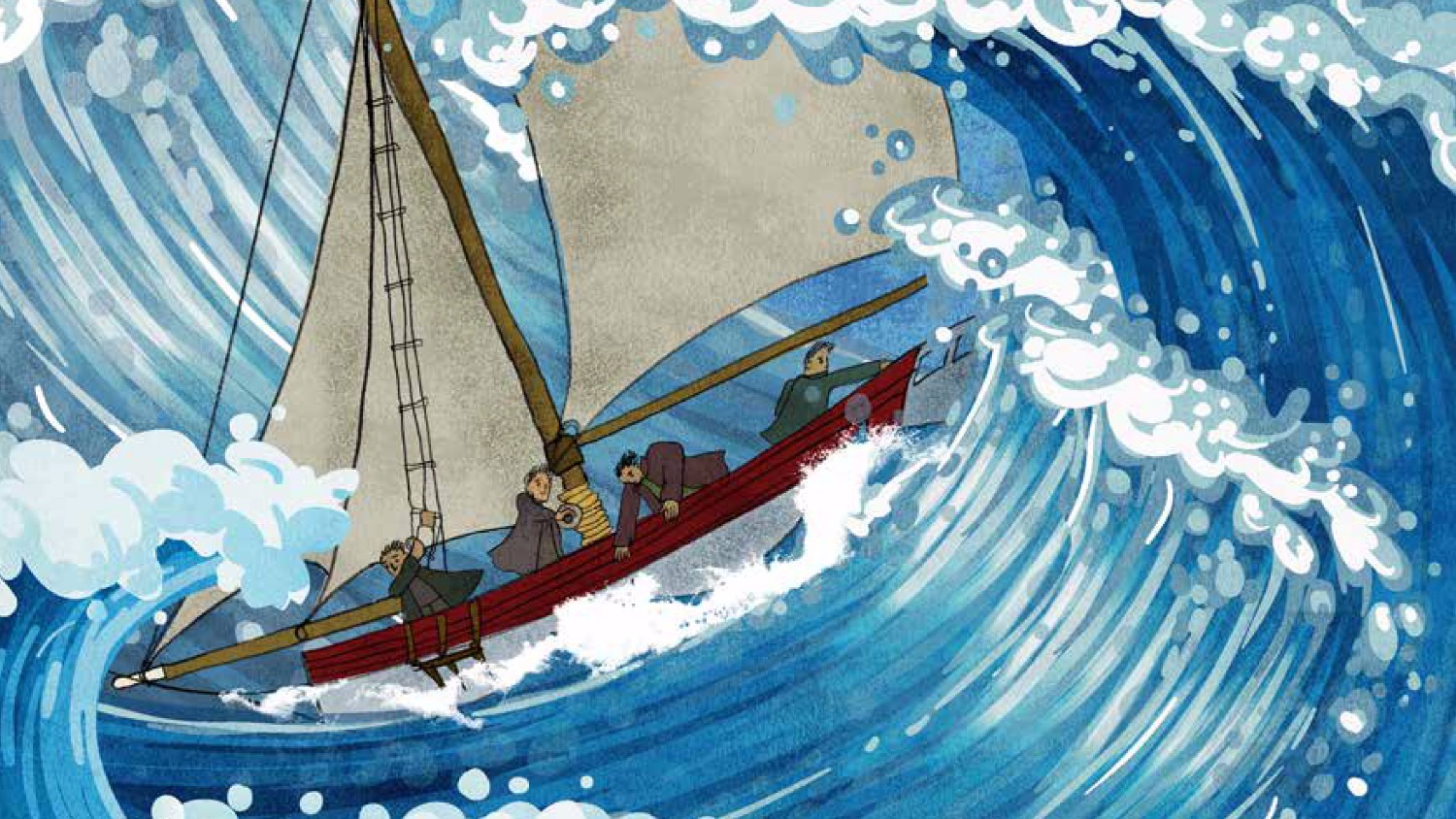
Lucy Goes to the Lighthouse by Grant Sheehan, illustrated by Rosalind Clark
In this historical picture book, Lucy’s mother takes her to the Pencarrow lighthouse at the mouth of the Wellington harbour and tells her the story of the first lighthouse keeper, Mary Bennett – the only female lighthouse keeper in New Zealand.
If only all children were like Lucy, grateful enough for their mothers that they’d abandon a new iPad in favour of a bike ride! The family seems a little artificial, and the beginning begs to be edited to make it tighter – it takes four pages of text to get to the lighthouse.
Once at the lighthouse, Lucy’s mother begins her monologue. Although the story is good, speech might not have been the best way to convey it, as it sounds as if she’s reading rather than talking naturally. (‘When Mary Jane and the children were told of the tragic loss, they were of course grief-stricken.’) The mother’s vast knowledge of the subject makes the modern frame of the story seem a too-convenient device.
However, the tale of the lighthouse-keeping family is strong enough that it doesn’t matter much. We’re told of some of the challenges the family faced – the leaky cottage and the difficulty of daily life. I wonder if the author thought that including the death of two-year-old Eliza would be too sad for children.
The illustrations capture the setting beautifully – the lantern shining from the window and the storm scenes are especially well done. The people are a little flat by comparison.
As a single mother to four children, I am in awe of Mary’s resilience – keeping the light going and the household running while living in such isolation, newly widowed, and caring for six children, one of them a newborn. I hadn’t heard of her before, and I think this book is a good way of introducing such a strong female character to children and sparking their interest in history.
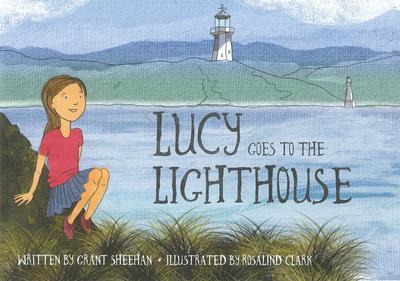
Lucy Goes to the Lighthouse
By Grant Sheehan
Illustrated by Rosalind Clark
Published by Phantom House
RRP: $25.00
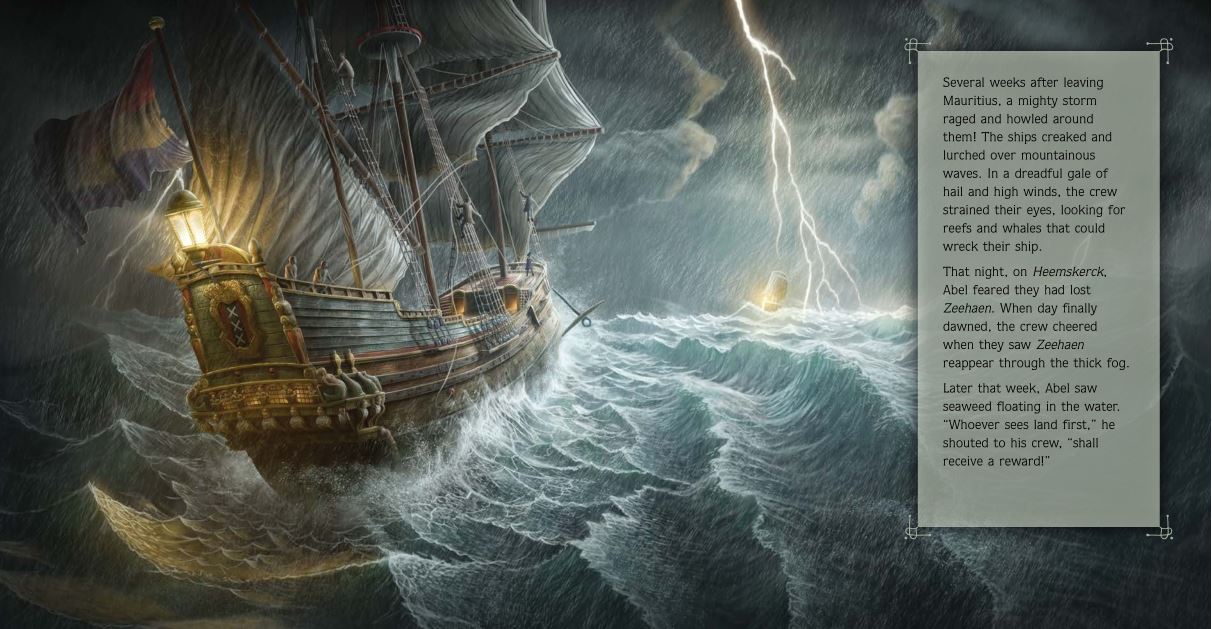
Abel Tasman: Mapping the Southern Lands by Maria Gill, illustrated by Marco Ivančić
‘Abel soon discovered life on a ship was a dangerous one in the 1600s. He held on tight when climbing the rigging … During violent storms, he clung to safety lines between masts when waves broke over the boat.’ The dramatic illustrations of Marco Ivančić and the storytelling of Maria Gill bring the world of Dutch explorer Abel Tasman to life.
Gill’s gift for creative non-fiction is evident here as she tells the story of Tasman’s impressive voyage from Indonesia to Mauritius, Tasmania, New Zealand, Tonga, and back again. She has woven historical facts, characters, and episodes into a cohesive story that had my kids listening – even though they like to claim non-fiction books are boring.
We liked that the story arc is not interrupted by fact boxes, although there are some footnotes. The language is well chosen and pitched at primary school children. We would have liked to learn a bit more about daily life on the ships, including what they ate and what their different jobs were.
It seems to be a fairly careful and objective take on history – it’s made clear that the explorers were in search of treasure and land to claim as their own, and we hear the perspectives of the existing inhabitants of the lands they visited. The tragedy that resulted from the Dutch and Māori not speaking the same language is handled in a way that is sympathetic to both sides. In our house, it made us think ‘if only’ and wonder about ways they could have communicated better.
This book should have an audience beyond New Zealand shores because it describes the other places that Tasman visited. The maps, biographies, and ship diagram at the back are all the more fascinating once you’ve been drawn into the story.
We loved the illustrations – they are dramatic, wonderfully detailed, and seem well researched. Credit should also go to the designers, who have helped produce a beautiful book that is sympathetic to the era it’s set in. This is an informative and captivating book, well worth adding to your library.
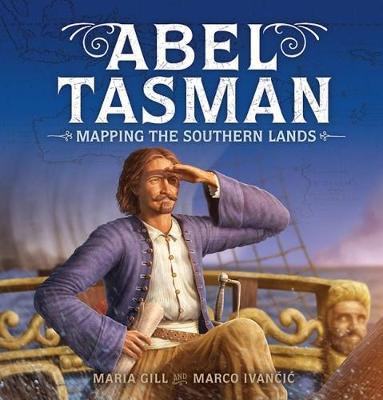
Abel Tasman: Mapping the Southern Lands
By Maria Gill
Illustrated by Marco Ivančić
Published by Scholastic New Zealand
RRP: $27.99
Regions of New Zealand: An Easy Guide by Peter Dowling
[Editors’ note, 8 February 2018 – Following correspondence with the author of this book, the Sapling editors have removed two sentences from the review and can report the publisher intends to include a note about macron use in future editions of the book.]
Regions of New Zealand: An Easy Guide begins along the lines of a geography textbook, with colourful maps that show the different ways that New Zealand has been divided into sections – rohe by Māori, provinces by the colonists, and the regions of today.
The remainder resembles a collection of tourist pamphlets, with one double-page spread devoted to each region. Pages at the back briefly describe offshore islands, New Zealand territories, and national parks and marine reserves.
The layout is attractive, with maps, photos, and fact boxes. However, the shortness of the book compared with the size and history of the regions means that the information is cursory and highly selective. For example, the Wellington region’s pages briefly mention its sub-regions, its founding, its capital status, its harbour, wind, and film industry, its landscapes, and the parliament buildings.
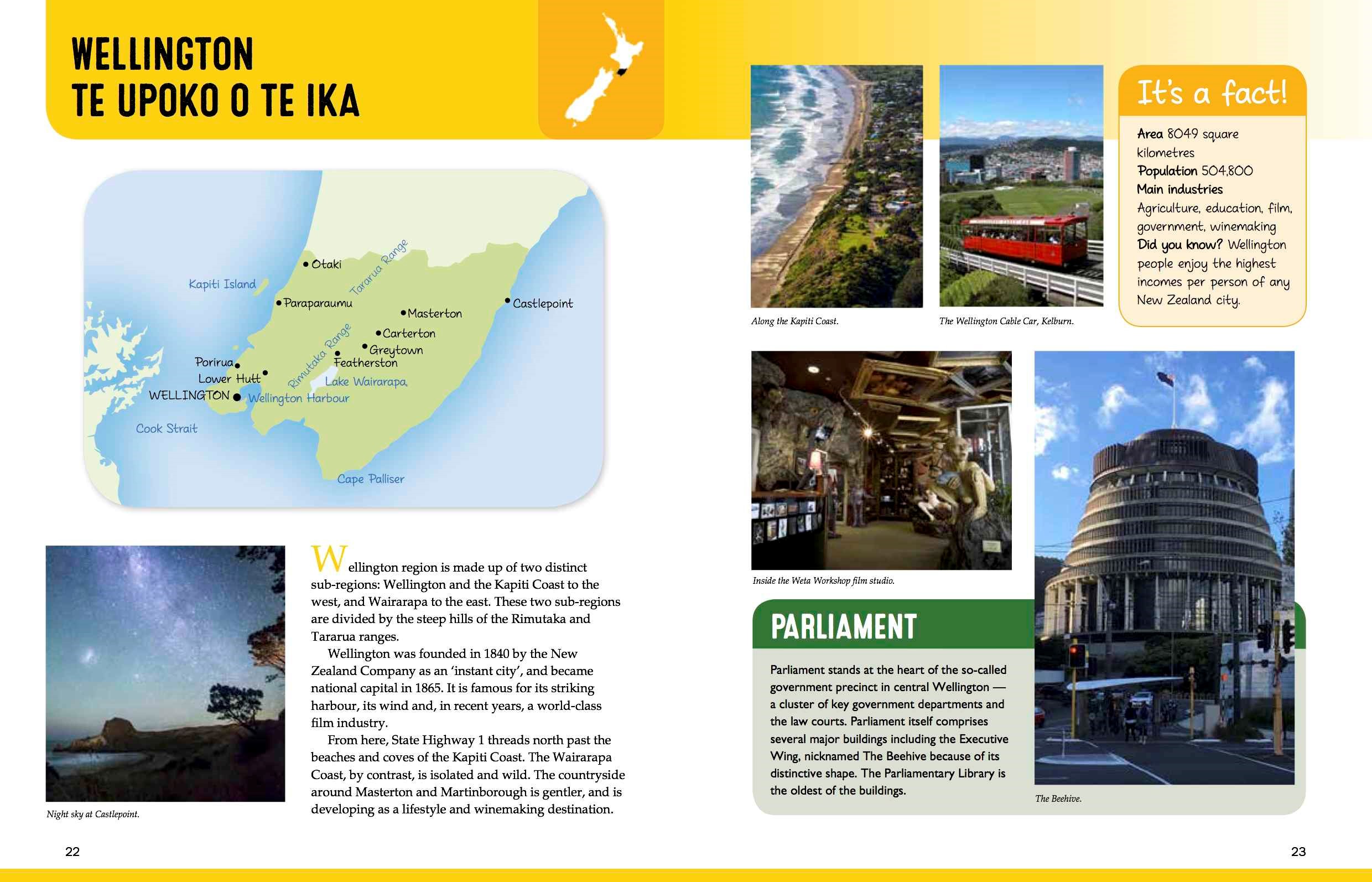
This hardcover book is apparently designed for use in schools (containing some general curriculum links), and the design is typical of non-fiction books for this audience. The endpapers are a cheerful and striking shade of yellow.
However, if this book was to serve as an overview of the regions for primary students, the language would need to be much more accessible and the information more comprehensive. Because of the bare-bones content and the adult language, I think the market for this book is in information centres and souvenir shops, rather than it being especially useful in schools.
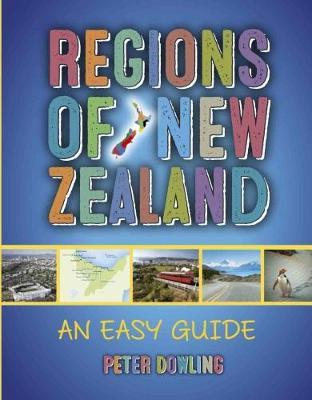
Regions of New Zealand: An Easy Guide
By Peter Dowling
Published by Oratia Media
RRP: $30.00
Esther Kiernan
Esther used to work as an editor for Learning Media. She has four children and lives in Wellington.



